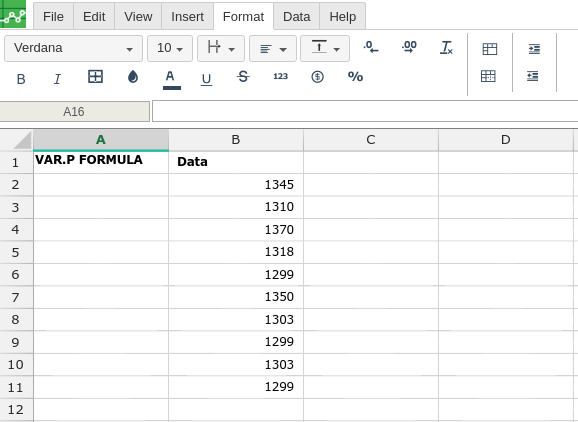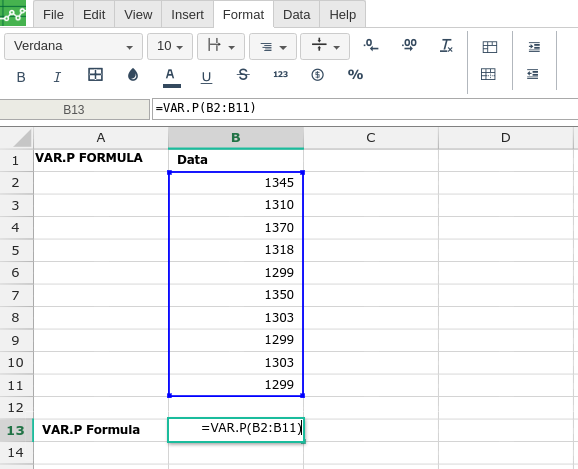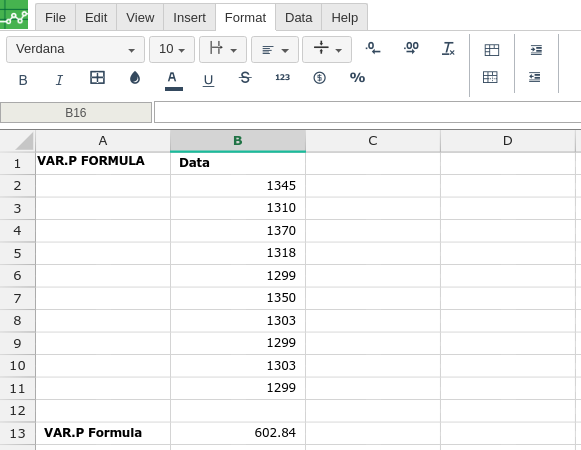VAR.P
Definition
Calculates variance based on the entire population (ignores logical values and text in the population).
Sample Usage
Syntax
VAR.P(number1,[number2],...)
The VAR.P function syntax has the following arguments:
Number1 Required. The first number argument corresponding to a population.
Number2, ... Optional. Number arguments 2 to 254 corresponding to a population.
Remarks
VAR.P assumes that its arguments are the entire population. If your data represents a sample of the population, then compute the variance by using VAR.S.
Arguments can either be numbers or names, arrays, or references that contain numbers.
Logical values, and text representations of numbers that you type directly into the list of arguments are counted.
If an argument is an array or reference, only numbers in that array or reference are counted. Empty cells, logical values, text, or error values in the array or reference are ignored.
Arguments that are error values or text that cannot be translated into numbers cause errors.
If you want to include logical values and text representations of numbers in a reference as part of the calculation, use the VARPA function.
The equation for VAR.P is:

where x is the sample mean AVERAGE(number1,number2,…) and n is the sample size.
In order to use the VAR.P formula, start with your edited Excellentable:

Then type in the VAR.P formula in the area you would like to display the outcome:

By adding the values you would like to calculate the VAR.P formula for, Excellentable will generate the outcome:

A
|
B
|
C
|
|
|---|---|---|---|
1
|
|||
2
|
|||
3
|
|||
4
|
|||
5
|
|||
6
|
|||
7
|
|||
8
|
|||
9
|
|||
10
|
|||
11
|
|||
12
|
|||
13
|
|||
14
|
|||
15
|
